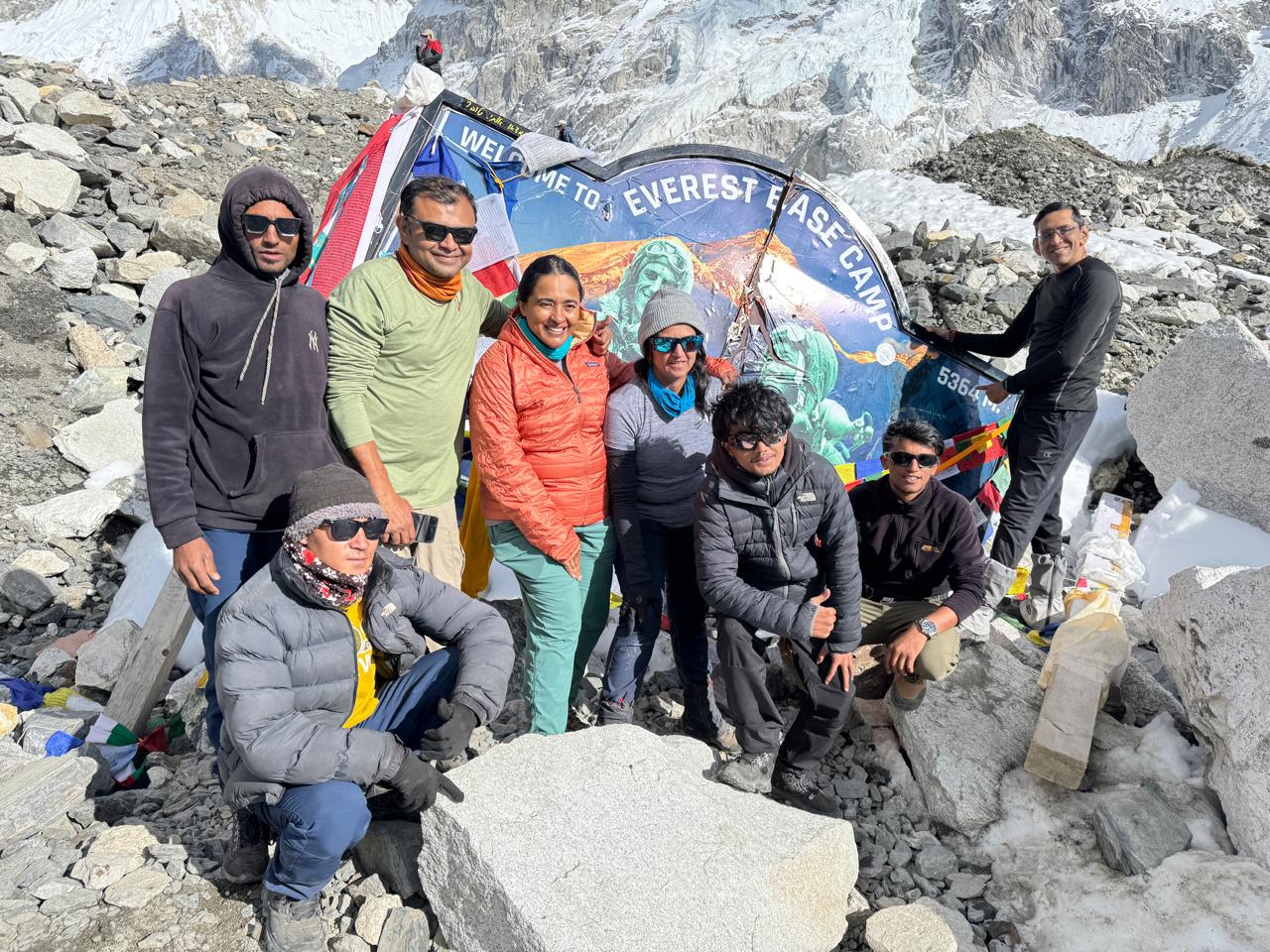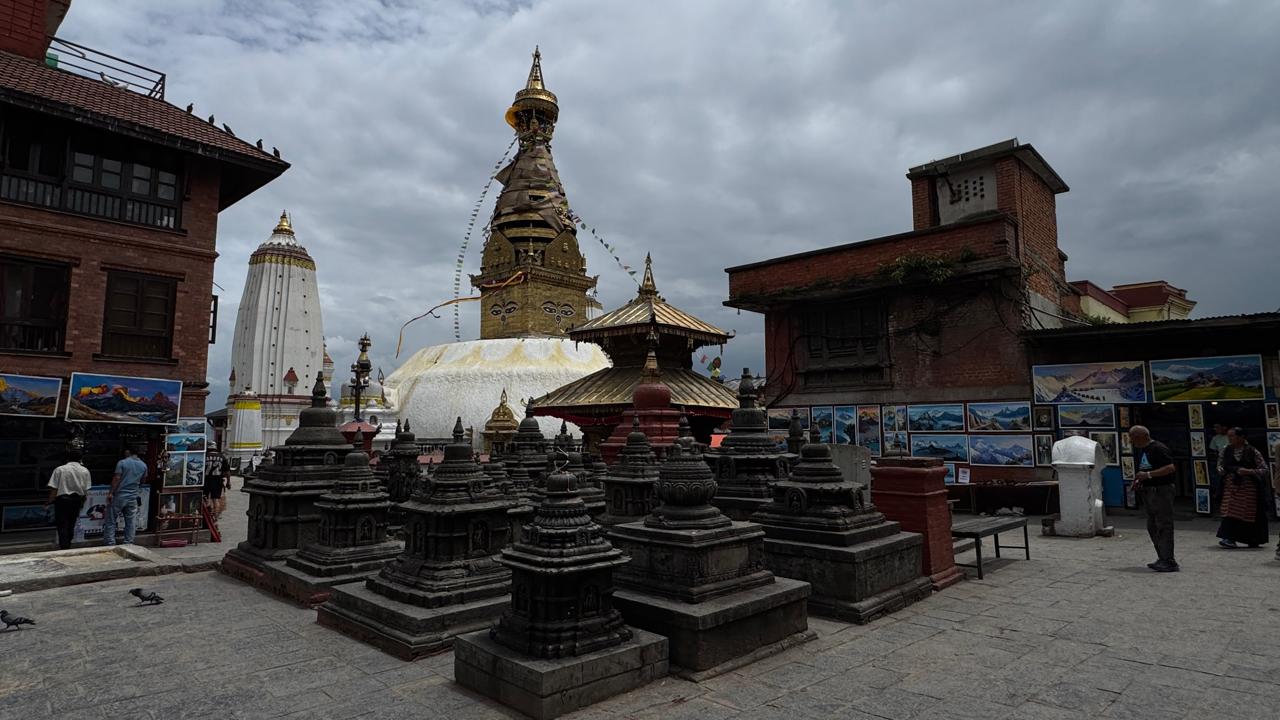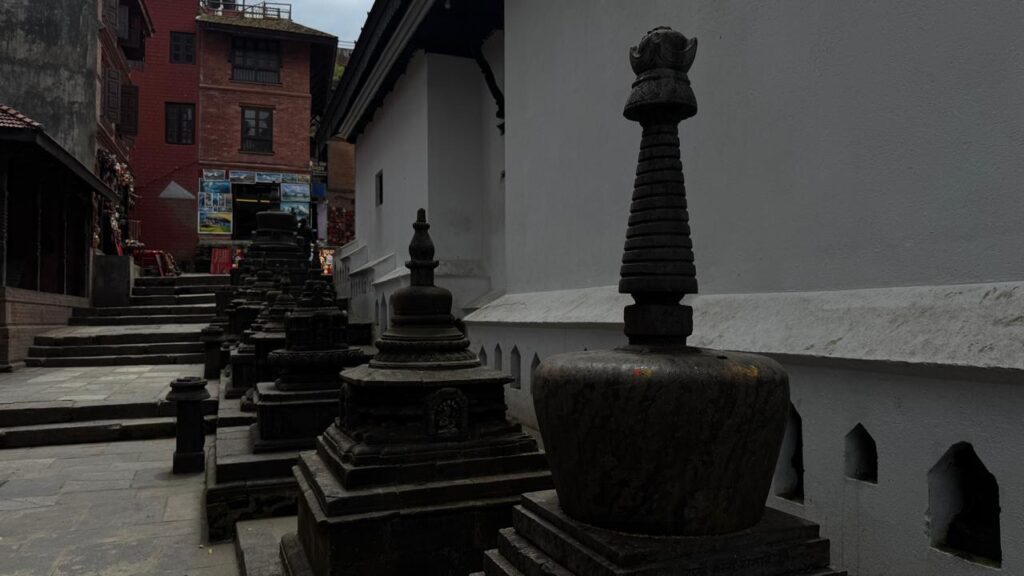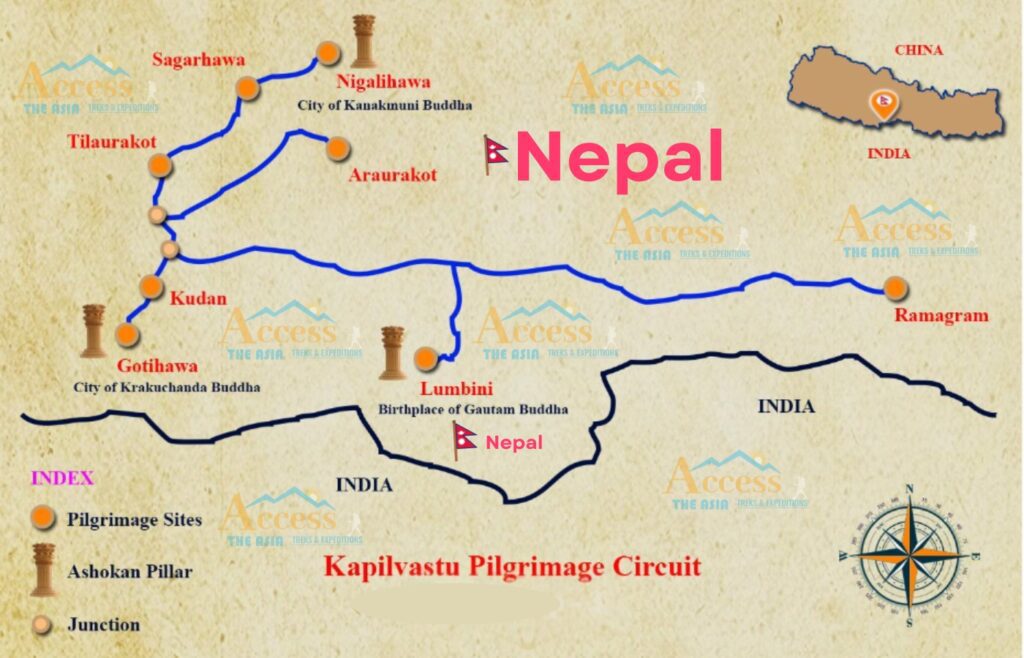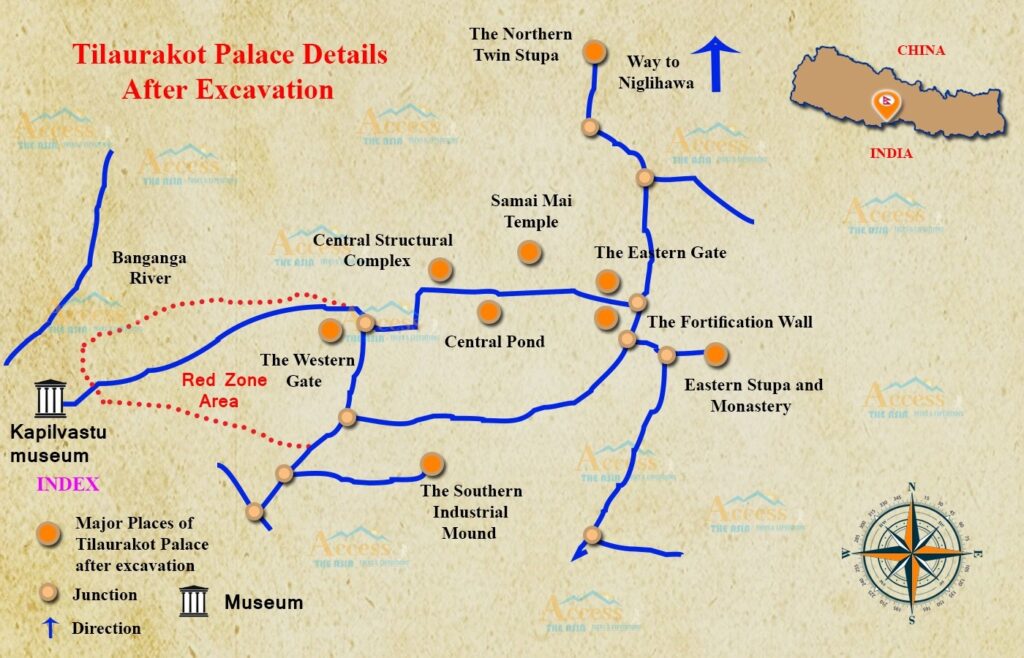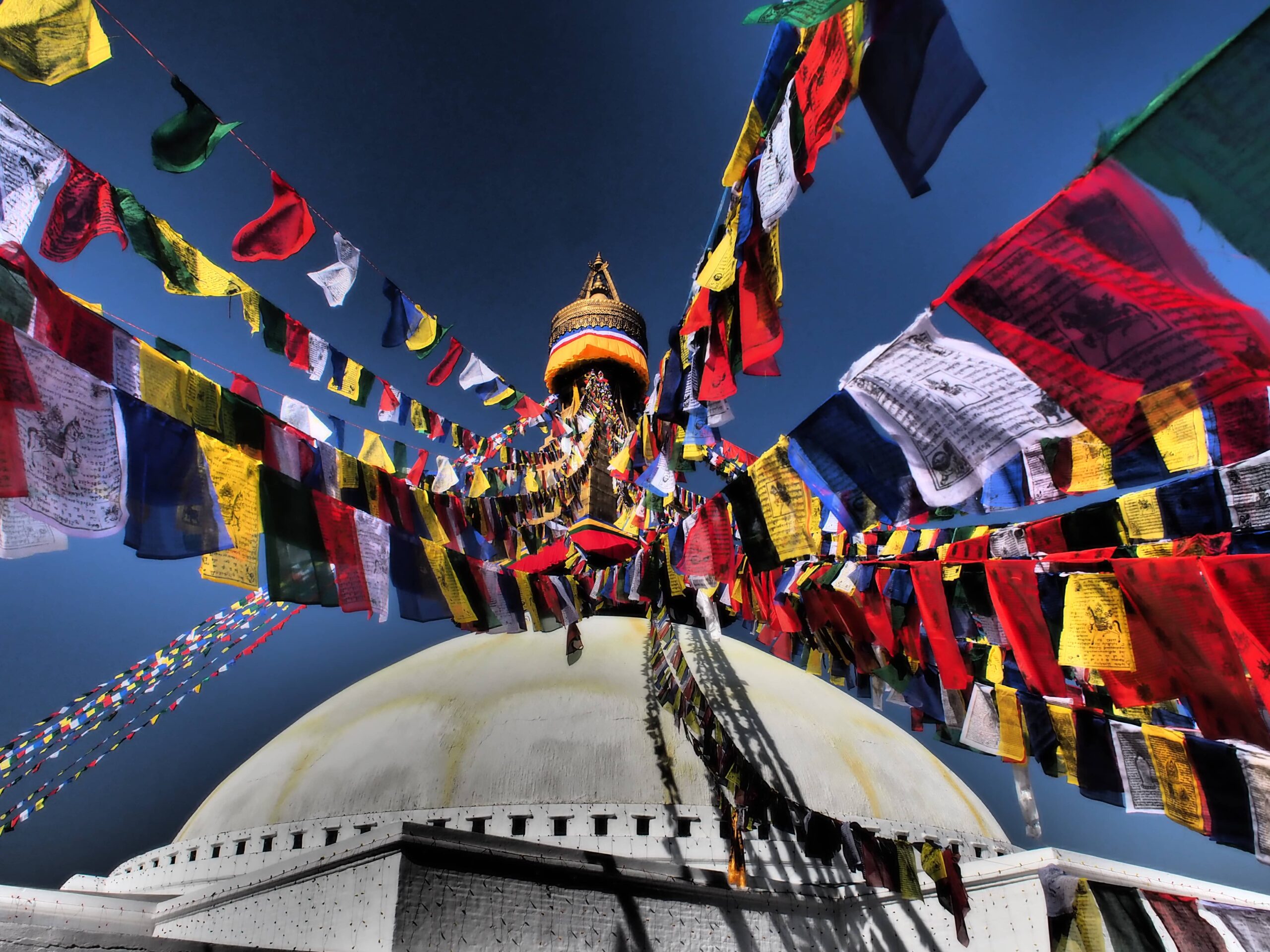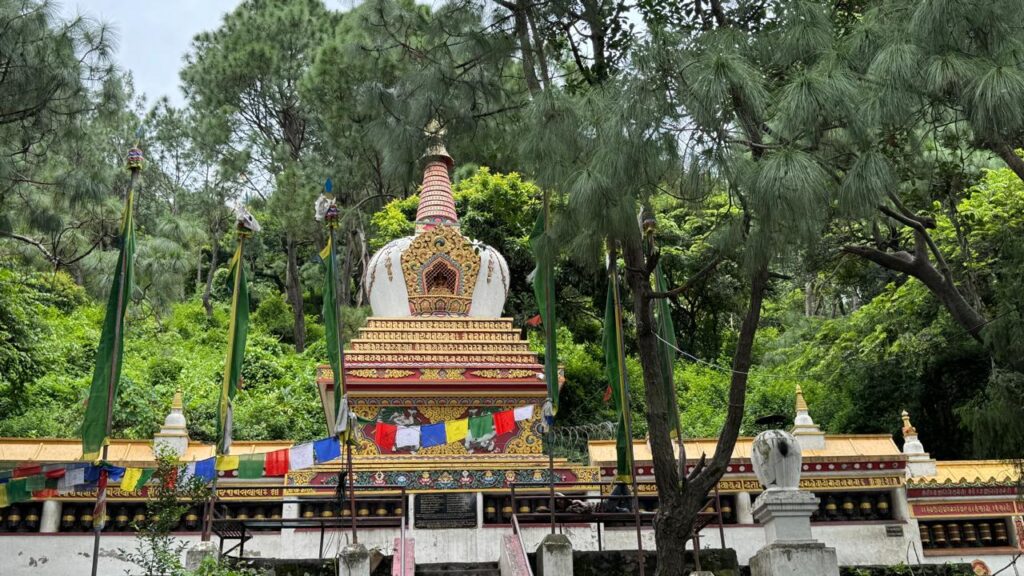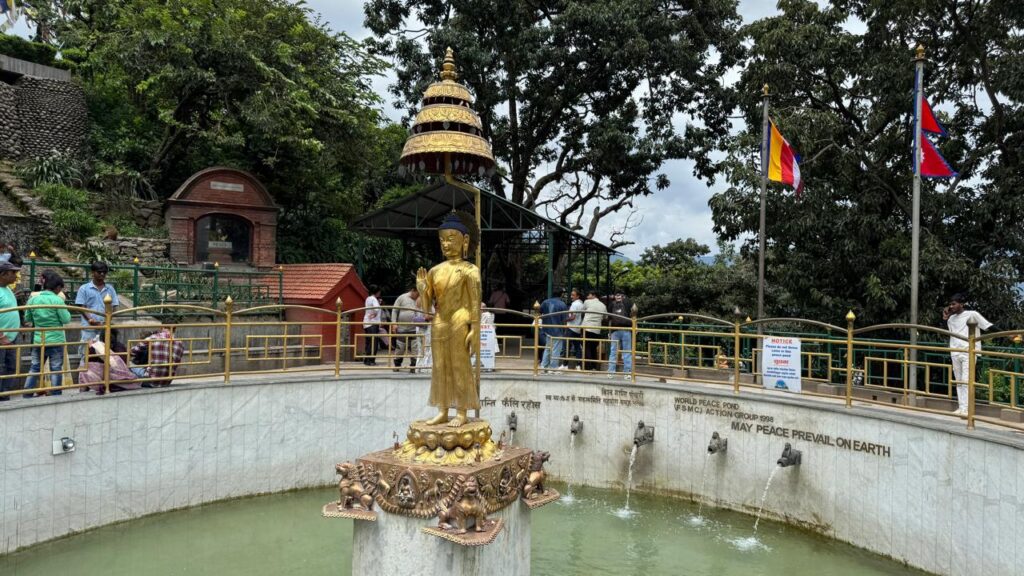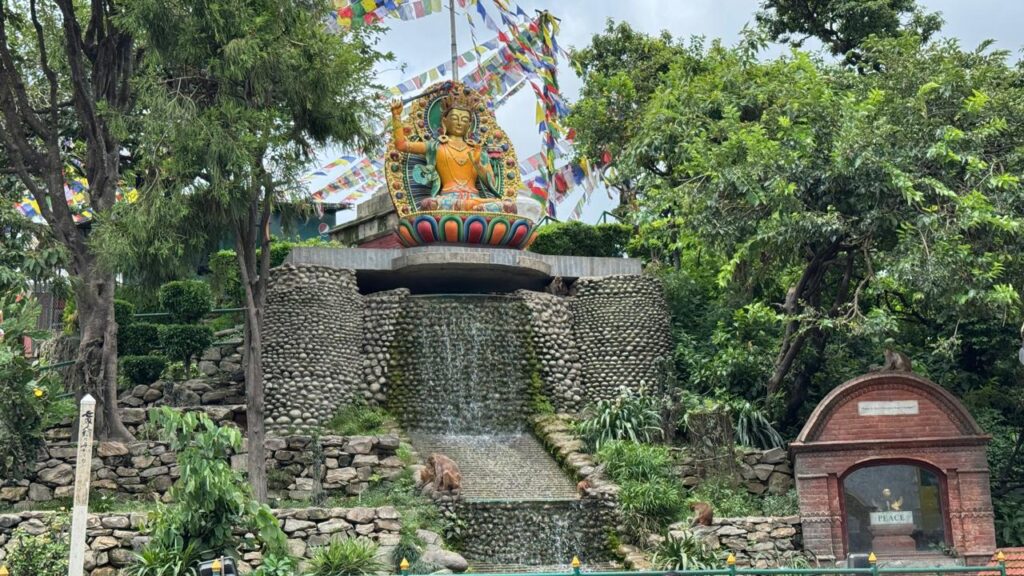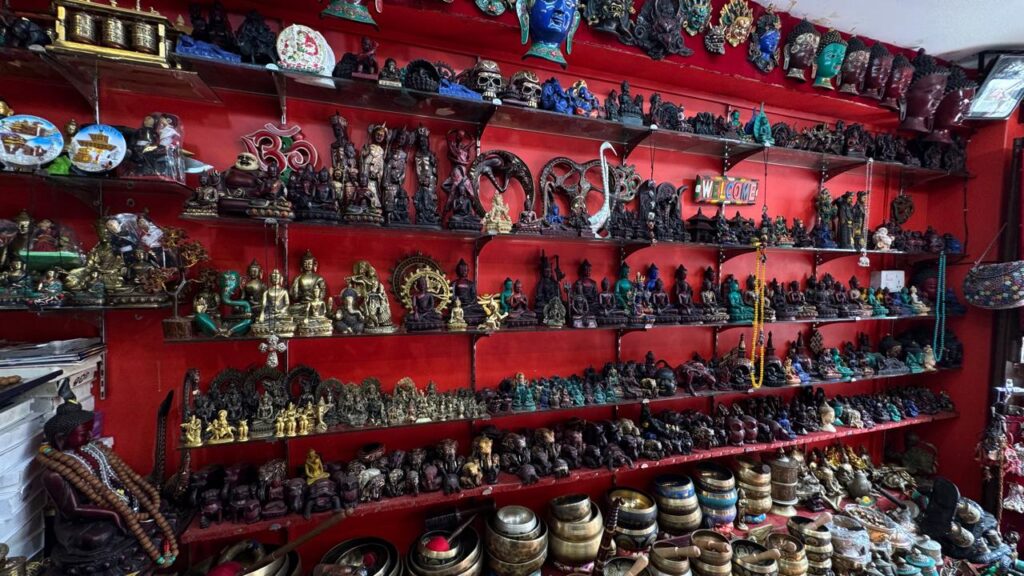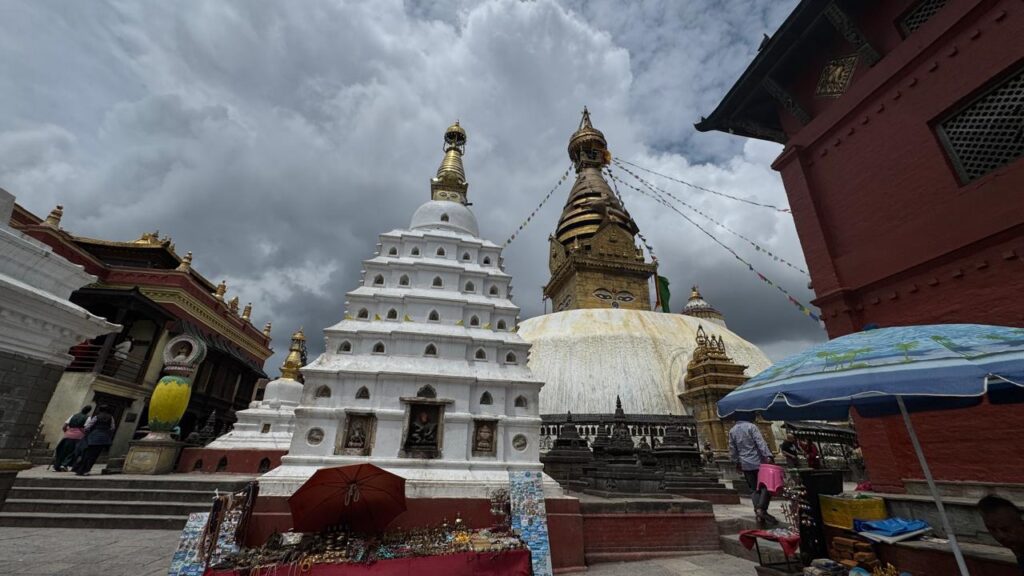1. Introduction
If you are planning for an Everest expedition then it is more than just a hike; it’s a transformative experience that necessitates careful planning particularly for the Everest base camp trek. The blog 15 Essential Tips for Everest Base Camp Trek Preparation is a vital resource for every trekker to contemplate before the trek.
This specific information guides you through all the key steps regardless of whether you are an experienced hiker or just the beginner. Proper Everest Base Camp Trek Preparation provides you the detail information regarding getting physically fit, getting adequately packed, acquiring permits, caring about local customs and even avoiding altitude sickness. It goes without saying that it is your ultimate toolkits to transforming your excitement into a safe, smooth and memorable journey to the grandeur of the mountains Himalaya.
The Everest Base Camp Trek is one of the most stunning treks combining adventure, culture, and natural beauty that exists in a trekking world. It is an adventure trip that will traverse your trekking through rough mountain terrain, quaint Sherpa settlements, and the magnificent Himalayan scenery. This trek will test your body and soul as it will take you to the base of the highest peak in the world at an altitude of 5,364 meters giving you both the best panoramic views and everlasting memories. The best way of enjoying this experience is adequately planning as it has been emphasized in the 15 Essential Tips for Everest Base Camp Trek Preparation. Whether it is acclimatization tactics, the selection of equipment, or the preparation that is done related to state of mind, carefully planned Everest base camp trek makes sure that you are not merely ready to go, but you can also enjoy every experience.
Why it’s a bucket-list adventure?
The Everest Base Camp trek is not particularly described in the simple word as a hike; it is a personal accomplishment as well as it is one of the most popular and thrilling adventures in the world. With the majestic Himalayas welcoming besides you, the feeling of being in the shadow of the highest mountain, Mount Everest, is really mesmerizing and breath taking. The magnification of nature itself, is a feeling that makes you realize how great, and how strong you stand. The trek exposes you to the Sherpa culture, the Buddhist culture and reveals sceneries that change between a lush valley and glacial valleys. The 15 Essential Tips for Everest Base Camp Trek Preparation depicts your aspiration of achieving this dream in a well-managed way. Once you are physically, mentally and logistically prepared, this bucket-list challenge can turn into a story that can be your once in a lifetime experience.
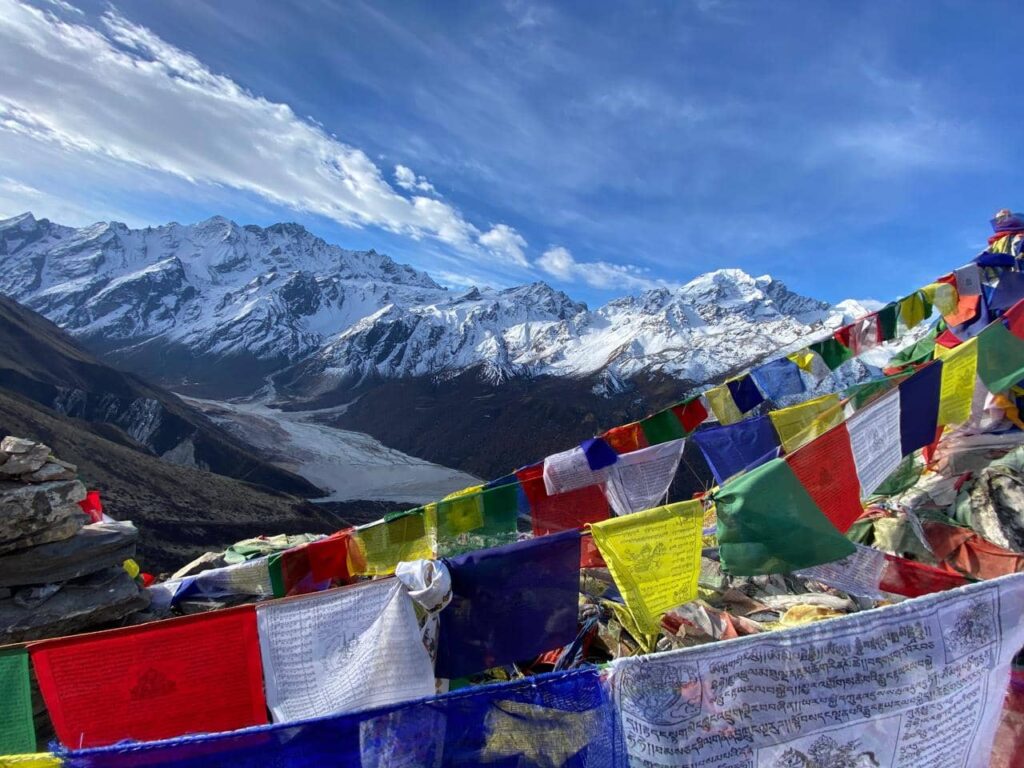
Everest Base Camp Trek
2. Understanding the Trek for Everest base camp trek preparation
Location and route options
Everest Base Camp trek is an amazing trek that helps you explore a lot in the Khumbu region of Nepal, the most beautiful part of the Himalayas where snowy mountains, prayer-flagged paths, and sincere Sherpa friendly people are to be found. The traditional route starts off with a beautiful flight to Lukla followed by Tengboche, Dingboche, Namche Bazaar, and Gorkshep up to the mesmerizing base of the highest mountain in the world; 5364 meters. The popular route, the standard one, is of course, the most popular but other treks with a little extra adventure as well as less people include the Gokyo Lake trek or the Three Pass trek and many more. The 15 Essential Tips for Everest Base Camp Trek Preparation provides you the idea for the right route selection, an important aspect of the Everest base camp trek preparation. Threfore, it ensures that the entire experience is both challenging and within reach of your strength, amounts of time, and wanderlust.
Trek duration and daily itinerary overview
The most popular Everest Base Camp trek usually lasts 12- 14 days, whereby a trip to 5,364 meters can be achieved and some critical acclimatization steps are taken. The trekkers start a trekking path that is well defined through Lukla to the famous Everest base camp by hiking through Namche Bazaar, Tengboche, Dingboche, Lobuche, and Gorakshep. These days will provide a little bit of everything, including cultural experiences, beautiful hiking trails and gradually increasing altitudes to allow the body to acclimatize. Along with rests days reserved wisely throughout your journey provides you the assurance of the body adaptation with the increasing altitude. Due to considerations regarding acclimatization days as depicted in the 15 Essential Tips for Everest base camp trek preparation, this provides you the journey with full assurance and safety regardless having many obstacles on the way. A well-organized trek to Everest base camp will allow you to pace yourself along the trail. You should not be in a hurry as you have time to soak into the beauty of the Himalaya and enjoy every single step of this most famous adventure in the world.
Best seasons to go for Everest Base Camp Trek
Determining the season is one of the best things to do for Everest Base Camp Trek Preparation These are the two best seasons of trekking, namely spring (March to May) and autumn (September to November). Spring time has clear skies, a moderate climate and flora in the form of rhododendrons that brighten the pathways when the trail is in full bloom, and autumn also presents excellent mountain views when the rains retreat, in turn, making it a fine landscape for photography and a perfect trekking environment.
As mentioned in 15 Essential Tips for Everest Base Camp Trek Preparation, trekking during these seasons is much better than the other seasons. Winter or monsoon can be accompanied with difficulties of high snowfall, rain or even impaired visibility. To make it even better, make sure that you plan your adventure during the best season so that you are guaranteed safe trails, perfect weather, and the best Himalayan experience.
3. Physical Fitness Preparation
The Everest Base Camp trek is not completely successful regardless reaching Everest Base Camp but rather its major steps are made when you start getting your strength, stamina, and endurance levels preparing yourself for trekking at high altitudes acquiring every small details. As all the details are provided in the 15 Essential Tips for Everest Base Camp Trek Preparation where your training must be done on cardiovascular activities such as hiking, running, cycling and strength training to your legs, core and back.
Gaining the trekking experience by taking uphill hikes and weighted by a mobilized rucksack will allow the body to develop a response to what the trail has to offer. Flexibility training and mental conditioning are also part of proper Everest base camp trek preparation so you can walk long days on high altitude. You have to adjust in changing weather and steep hills with ease. It is always healthy to get into a regular workout at least a month ahead of your Himalayan trip, so as to avoid injuries and to enjoy this trip more as well.
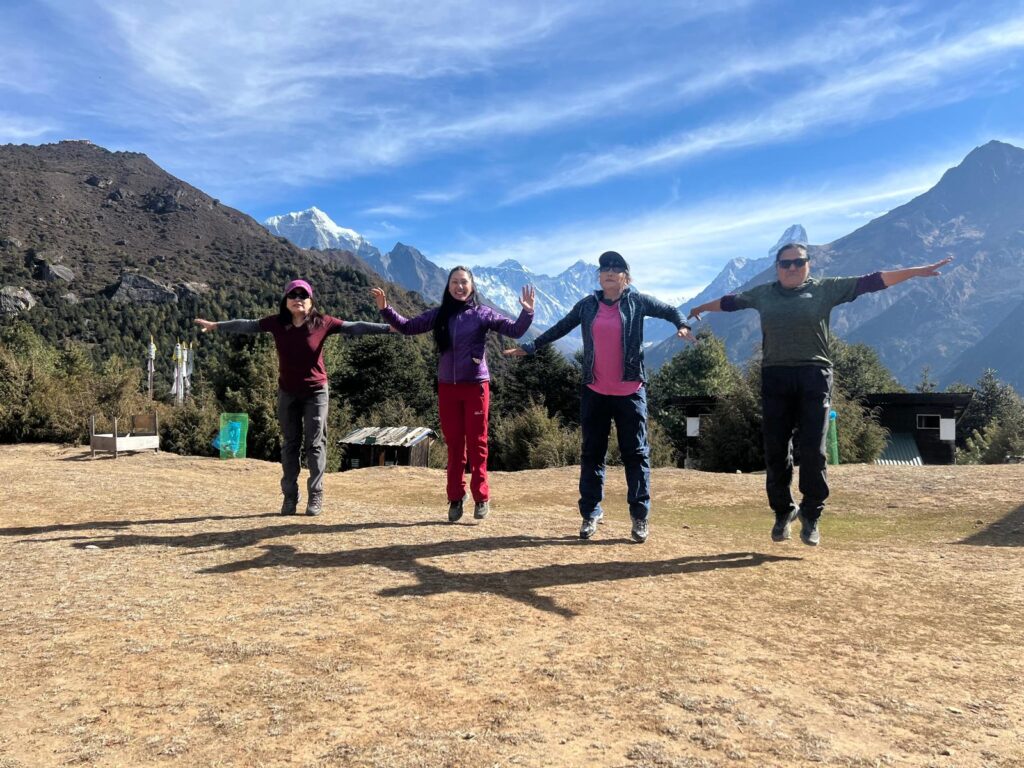
Fitness level required
During your Everest Base Camp trek preparation, it is important to understand your level of fitness required so that you have a safe (and fun) journey. No professional athlete abilities are required, however, such qualities as good endurance of a cardiovascular system, strength of legs, stamina, are necessary. Your readiness can be considerably enhanced by frequent hiking on ground of different terrain, cardio workouts such as running or cycling, and weight training. You will have to undergo trekking of 5-7 hours per day in the high altitude; therefore, creating both physical and mental strength in preparation process of the Everest base camp trek will assist you to acclimatize to the thin air and difficult pathways. Everest Base Camp Trek Preparation is the most to accomplish this trek with an ease.
Suggested training plan (cardio, strength, endurance)
Everest Base Camp Trek Preparation needs a structured training plan. Training on cardio, strength and endurance will enable you to work on tough trekking days and high-altitude trekking:
Cardio Training: Running, cycling, swimming or brisk walks 4-5 times a week. Gradually build up your session length to 45-60 minutes for a higher cardiovascular stamina. Stair climbing or hill walks replicate the trek conditions and is great for building up a strong leg.
Strength Training: Squats, lunges, step-ups, and core exercises 3 times a week will enhance stability and avoid injuries. Raising the body by pushups and slight weight lifting can aid in carrying your backpack easily during the trek. For carrying the luggage, you are provided with the porter. Sometimes, in the higher altitude the light backpack might be too heavy as you run out of the strength during the intense trekking period.
Endurance Training: Take extended hikes into the weekend with a backpack. Begin at shorter distances and build on it slowly in terms of distance and elevation to accommodate to long-duration physical activity at high altitude.
By including such elaborate training program in your preparation to hike Everest Base Camp, you can enter the adventure healthy in mind and body, and minimize chances of developing the fatigue that comes with higher altitudes.
The trekking conditions you will have during your trip to the Everest Base Camp can be simulated with weekend hikes when your backpack is charged with weighty items and you go hiking on hilly or even mountainous surfaces. This exercise is one that will not only build your legs and core but also get your body ready to spend long durations of time at a high altitude. Preparing yourself to climb Everest Base Camp by including altitude simulation and pre-trek hikes, will also greatly minimize the risk of experiencing altitude sickness during your trek and can make the experience all the way more enjoyable and risk free.
4. Mental Preparation
Managing expectations
One of the major parts of a successful Everest Base Camp Trek Preparation is expectation management. The hike is physically strenuous, features lengthy days of walking, and features foul weather. Even as the most amazing scenes of the Himalayas unfold, one should keep in mind that not all days will be free and fabulous.
Mental preparation to overcome physically, the confinement, and amenities must not be very luxurious, and their connection to the outside world might be poor, all these would keep you positive. When being realistic in the goals you set on daily distances, rest days, and altitude acclimatization, you can fully enjoy the experience. Recommendation: Including mindset training and adequate planning in the preparation of Everest Base Camp trek will make the trek more secure and enjoyable and a highly fulfilling experience can be achieved.
Coping with long days and unpredictable weather
There is just some measure of learning to deal with long days in the trek and not being able to predict the weather in the region, which is the part of the overall Everest Base Camp Trek Preparation. Trekkers will tend to do 5-7 hours walk every day in a rough terrain and the weather may change drastically within minutes (sunshine to snow and rain).
The best way to deal is by pacing one-self, taking breaks and being hydrated. Multi-layering clothes and superior trekking equipment are highly necessary in order to adjust to different temperatures. By preparing yourself psychologically to counter the challenges throughout the time you are on Everest Base Camp trek, you will be able to overcome most of the challenges. You can have a good time of your life without experiencing a lot of discomforts caused by fatigue or changes in weather conditions.
5. Choosing the Right Trekking Company or Going Solo
One of the major parts in Everest Base Camp trek preparation is the decision of whether to trek with a trekking company or go solo. The benefits of trekking under an established company are as follows: treks are well-organized with accommodation, guides and in the case where first-time trekkers or those not well versed with high altitude environments are involved.
Conversely, the solo option can provide freedom and the ability to set one is own pace; however, it must be planned well, with good navigation, and good knowledge of high-altitude risks. It is important to evaluate your level of experience; how comfortable you feel with self-management and your individual objectives. Such a decision is recommended when you for Everest Base Camp Trek Preparation. It must be carefully observed with the objective of avoiding the risk of altitude sickness and having more fun. And, carefully planned journey gets the highest possibility of being successful and more enjoyment.
Benefits of guided treks vs. independent trekking
When planning your Everest Base Camp trek preparation, understanding the advantages of guided treks versus independent trekking is essential.
- Guided Treks: Participating in a professional trekking company will give you expert leads, the familiarity of local areas and logistical support, such as accommodation, food, and emergency support services. This is the case with the guided trek, especially to persons who are first time trekkers or those who are not familiar or comfortable with high altitude treks, the guided trek is safe and tends to offer comfort in the journey.
- Independent Trekking: Solo trekking has the advantages of freedom of schedule and destination, and exploration. It is more self-reliant, personal in nature, but extensive planning and navigational knowledge is involved, and contingencies need to be prepared. Independent trekkers have to sort out their own permits, accommodation and altitude risks.
Taking all this into consideration, Everest Base Camp Trek Preparation allows you to select the option that best fits your experience, comfort level, and adventure goals.
6. Permits & Paperwork
As part of thorough Everest Base Camp trek preparation, obtaining the necessary permits and understanding local regulations is essential for a smooth trek.
- TIMS Card: All trekkers in Nepal have to carry the Trekker’s Information Management System (TIMS) card. It facilitates the monitoring of trekkers during the trek which guarantees security till the trek ends.
- Sagarmatha National Park Entry Permit: Everest Base Camp Trek covers the area in the Sagarmatha National Park and thus, entry permit needed. The permit assists in the implementation of conservation activities, and it grants the use of park amenities.
- Other Local Requirements: Some villages or restricted places require more permits, depending on the route you intend to use. Looking at the local regulations early and getting all the permits is a key aspect of your planning ahead of Everest Base Camp trek, to avoid delays and be on track with regulations.
7. Budget & Cost Breakdown
Proper planning of your budget is part of effective Everest Base Camp trek preparation. Expenses are usually spent on acquiring permits, lodgings, food, guides or porters, equipment, and transport. Generally, trekkers are advised to prepare some finances that should cover necessities and contingencies because prices fluctuate depending on the season and services. The appropriate budgeting in the process of trekking to the Everest Base Camp will help you enjoy your trip minimizing any troublesome financial surprises.
Trekking package cost
When you go for the Everest Base Camp Trek Preparation, it would be wise to put traveling package into consideration as a way of reducing your logistics. The price of the packages usually covers services of a guide and porters, hotels, food, permits and a flight to and from Lukla. The prices are different with respect to the season, group size and level of comfort. When preparing to do an Everest Base Camp trek, analyzing a trekking package is a good way of controlling costs as well as stress-free adventure in that way.
Flights (Lukla or alternatives)
You should also plan your flights as part for Everest Base Camp Trek Preparation. The majority of trekkers reach Lukla, the hub of the trek, by flight from Kathmandu but they are often delayed due to weather delays. Other options are the Jiri (or Phaplu) to Everest base camp trek which is an additional few days to the Everest base camp trek but involves gradual acclimatization and few extra trekking days. Considering the flights and contingency plans for Everest Base Camp Trek makes the adventure off to a good start.
Accommodation, food, permits, gear, insurance
Fully equipped Everest Base Camp Trek Preparation entails the calculations of accommodation and foods, trekking permit, trekking equipment, and travel insurance. Lodging and food are basic, and tea houses along the trail can provide it, and permits like TIMS and the Sagarmatha National Park entry are required. Good equipment and insurance will mean safety and comfort, making sure that your Everest Base Camp Trek Preparation does not miss out on something basic and necessary for safe and pleasant experience.
8. Packing List & Gear
Appropriate planning of a packing list is the key to effective Everest Base Camp Trek Preparation. Important aspects are variable temperature clothing, sturdy trekking backpack, trekking boots, insulated jackets, sleeping bags, trekking poles (optional) and other essentials such as headlamp, water bottle, and first aid gear. Comfortability, safety and preparedness to high altitude conditions during your Everest Base Camp Trek Preparation are met by the proper gear.
For more details, you can check out on Everest Base Camp trek 14 Days.
9. Health & Safety
Health and safety are important factors that will need to be considered for Everest Base Camp Trek Preparation. Trekkers ought to be alert to the danger of altitude sickness, hypothermia, and dehydration, and prevent these with slow immunization and drink adequate water, among other precautions. It is important to have a first aid kit that is well equipped and travel insurance covering emergency evacuation. The fact that rescue services and helicopter evacuation can be hired in case of critical illness or injury serves as an added security measure in knowing that Everest Base Camp trek preparation encompasses safety and peace of mind as well.
For more details in Altitude sickness, you can check out on Altitude Sickness.
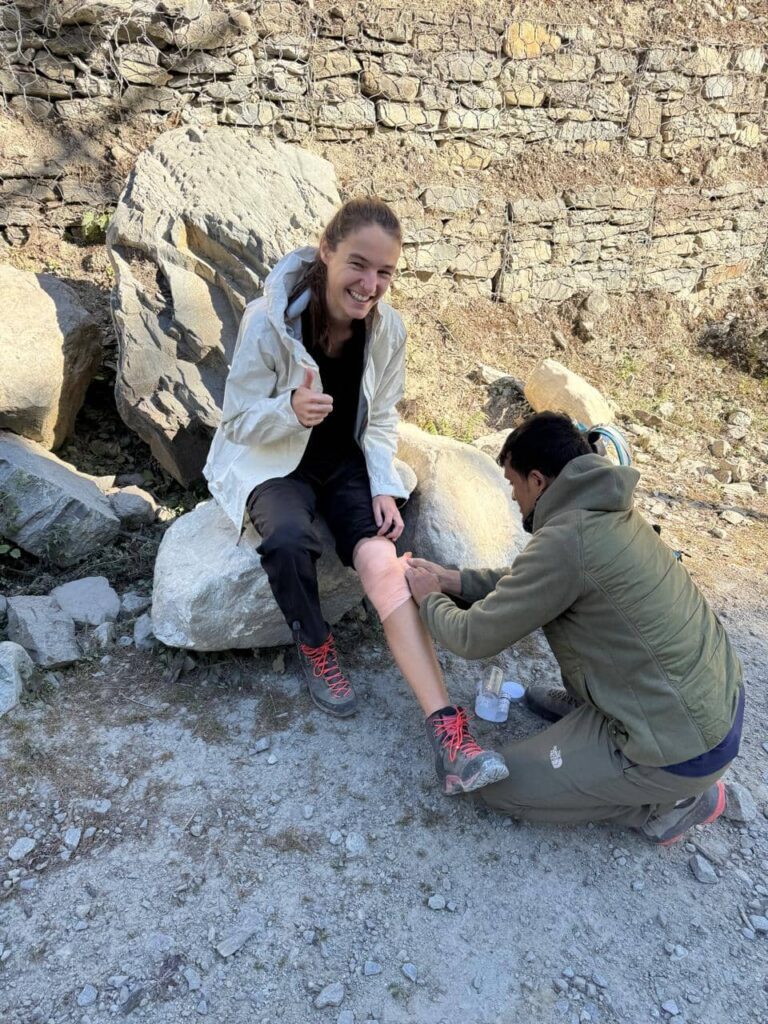
10. Transportation to the Starting Point
Flight to Lukla (what to expect)
One of the main factors for Everest Base Camp Trek Preparation is a flight to and from Lukla. The 30-40 min flight has magnificent views of the Himalayas. Somehow, sometimes we experience sudden changes of weather that may result in flight cancellation or delays. Mentally, the trekkers must be ready in case of early timings and waits and short runaways. Knowing these factors in Everest Base Camp Trek Preparation will make the beginning of your activity easier.
Overland options if flights are cancelled
Everest Base Camp Trek Preparation in an effective way, one should be aware of the overland options in case of bad weather at Lukla airports that may cause the cancellation of flights. Some trekkers may begin their trek at Jiri or Phaplu, or fly from Ramechhap (Note: Normally, during the peak season, Civil Aviation Authority of Nepal (CAAN) manages flight from Ramechhap (142 Km from Kathmandu) which is around 4-5 hours’ drive from Kathmandu). Trekking from Jiri or Phaplu with the chance to gradually acclimatize, and enjoy scenic walks is also an option. By considering these alternatives for Everest Base Camp Trek Preparation, it is possible to remain flexible and keep the interference with your itinerary to the minimum extent.
11. Acclimatization Days & Side Trips
Why rest days are important?
Rest days are important for the smooth Everest Base Camp Trek Preparation. Days off are to give time to your body to heal, to adjust to higher altitude and avoid fatigue or hypoxia. The breaks should be made strategically: One would have better endurance, better performance on difficult trails, and safer, more pleasant experience on the trek. Resting during your Everest Base Camp Trek Preparation is also necessary both physically and mentally.
Popular acclimatization hikes
Successful Everest Base Camp trek preparation highly involves including acclimatization hikes. Famous side treks like the Everest View Hotel at Namche Bazaar, Kalapatthar and Gokyo Ri (among others) can assist your body to acclimatize at increasingly higher altitudes as you are rewarded with magnificent panoramic views. Adding such hikes to your preparations to have a successful trek to Everest Base Camp enhance the oxygen adaptation, lessen the chances of altitude sickness, and enjoy the experience of the whole trip in a wholesome manner.
12. Trekking Etiquette & Local Culture
Observing local tradition and using good trekking etiquette is a major consideration in Everest Base Camp Trek Preparation. Collaborating with the local people and nature, asking people to take photographs and engage in sustainable tourism such as managing harmful waste should be observed by the trekkers. Knowing what the locals do, the greetings, and respect to the religious places add depth to your experience, also it helps to maintain healthy relationships with the communities along the trail. Everest Base Camp Trek Preparation gets much safer and comprehensive by integrating cultural awareness.
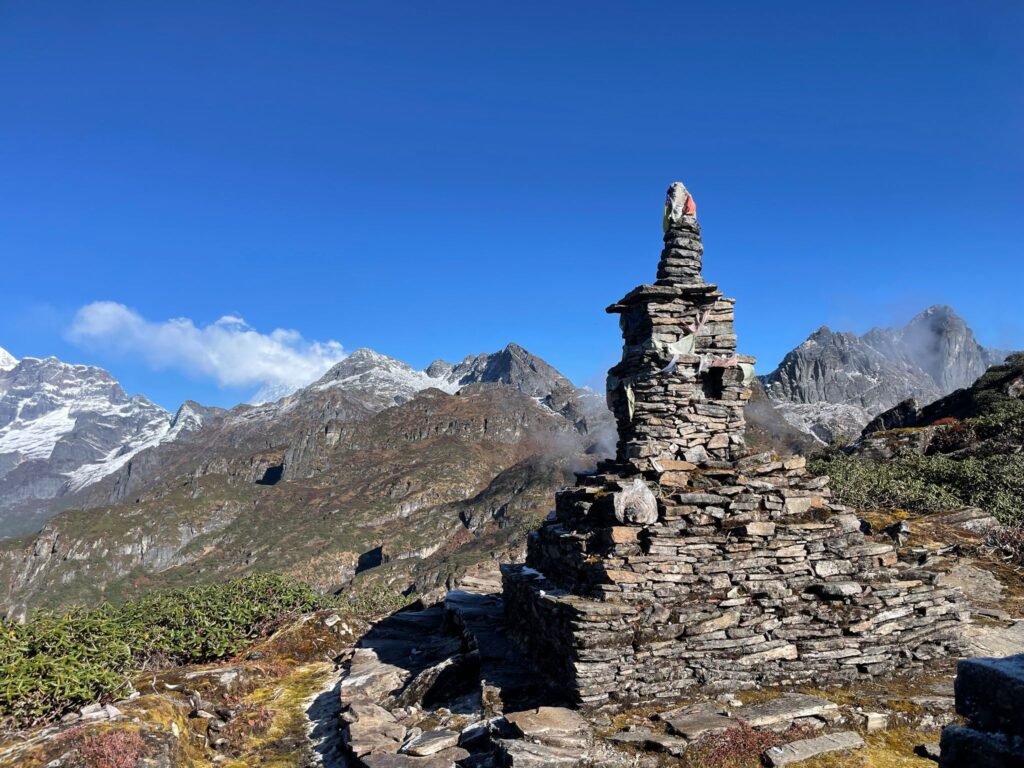
Respecting Sherpa traditions
One of the most important facts about the Everest Base Camp Trek Preparation is that one should learn and follow the Sherpa traditions. Among other things, trekkers must respect local customs that include greeting locals with a namaste, avoid stepping onto religious offerings and respect prayer flags and monasteries. Understanding of Sherpa culture in Everest Base Camp Trek Preparation helps you in having mindful interactions and total enjoyment of the trek.
Environmental responsibility (Leave No Trace)
One must be environmentally responsible when going for the smooth Everest Base Camp Trek Preparation. Trekkers are to utilize the Leave No Trace values, and they should carry all their waste, limit their plastic consumption, avoid negatively impacting the natural environments. Universal awareness of the traces that you leave behind will maintain the uncorrupted environment in Himalaya and will permit individuals in the future generations the experience of trekking in the mountains. Addressing sustainability and environmentally friendly adventure, the following practices are worth incorporating into your Everest Base Camp Trek Preparation.
Tipping guides and porters
When trekking to Everest base camp, it is necessary to plan on tipping the guides and the porters as part of the considerate preparation. It is prudent to make a budget on how much the trekker will compensate the staff due to hard work, professionalism, and encouragement during the trek. Appreciative tipping is not only a way of showing it but ensuring positive relations and ethical practices within the trekking community. Considering tipping for Everest Base Camp Trek Preparation not only makes it looks special, but also a well-balanced trek.
13. Challenges You Might Face
Weather extremes
Being aware of the weather extremes plays an important part in Everest Base Camp Trek Preparation. Weather conditions may rapidly change between sweltering days and frozen nights and storms erupt rather abruptly and are frequent at higher altitudes. Warm clothes, layering gear and the weather forecast must be monitored every day to remain safe. Considering how the weather could change during your Everest Base Camp Trek Preparation, you can keep safe and comfortable throughout the trek.
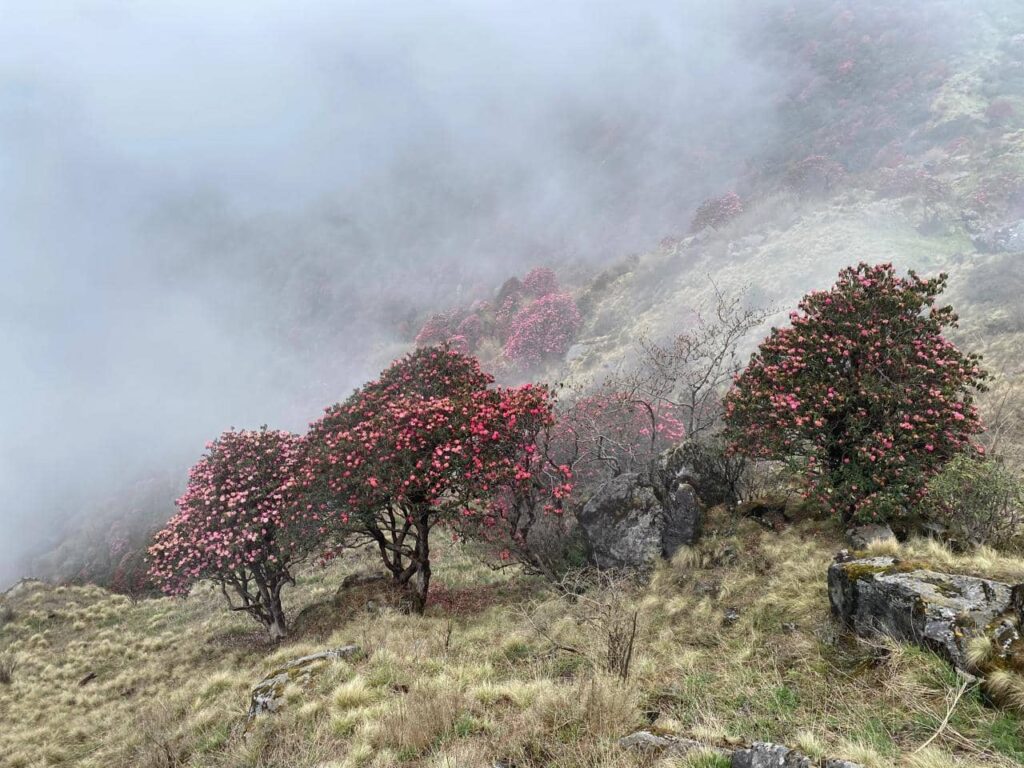
Flight delays
Delays in a flight are one of the critical factors to be considered during Everest Base Camp Trek Preparation. The flights to Lukla are often disrupted by weather conditions, and such flights are either cancelled or rescheduled. Trekkers are advised to be flexible with the program schedule, pump in additional buffer time and be on top of weather information. Everest Base Camp Trek Preparation is effective by including contingency plans in the case of delays in flights which means the beginning of the trek will be a smoother and less stressful experience.
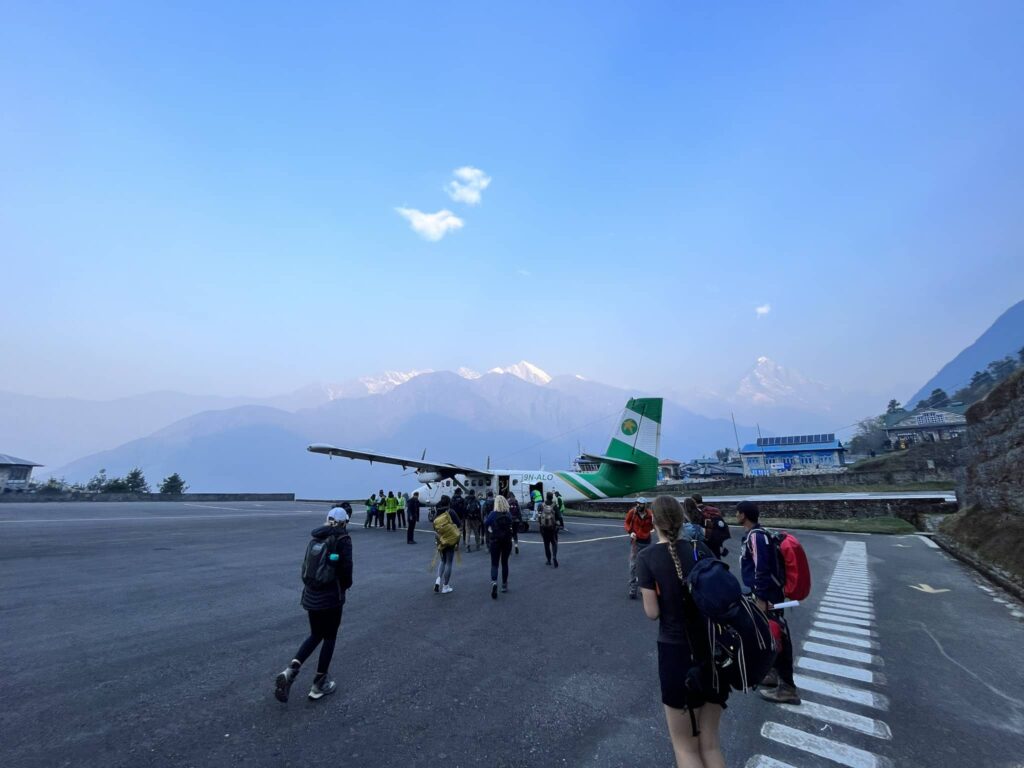
Physical exhaustion
One of the main elements of Everest Base Camp trek preparation is dealing with fatigue. The constant long trekking days, steep slopes, and high elevations may exhaust the body very fast. Training should also be proper, at a pace, hydrated, nourished and be given rest days occasionally to ensure energy levels. Battling physical fatigue during your Everest Base Camp Trek Preparation will make it happier, safe, and memorable.
14. Safety Tips
Hydration and nutrition
Hydration and nutrition are also essential element for Everest Base Camp Trek Preparation. Treks of high altitude enhance fluid losses and energy consumption, and thus it is vital to drink adequate water and consume well-balanced meals. Post-workout meals further assist in maintaining endurance and total well-being with the inclusion of energy-rich snacks, electrolytes and nutrient-dense food. A combination of hydration and nutrition during Everest Base Camp Trek Preparation would avoid fatigue, altitude sickness, and improve performance during the trek.
Staying on marked trails
The aspect of following marked trails is a significant role in Everest Base Camp Trek Preparation. By using marked trails, one will minimize the possibility of getting lost, will not harm fragile ecosystems, and will avoid hazards in remote locations. By obeying the etiquette of trail signs and local advice in Everest Base Camp Trek Preparation, you will not only make it possible to keep the environment at low risks but make sure your experience is decent and well organized in its periodicity.
Communication and emergency contacts
Failure to communicate can prove to be a crucial preparation issue when it comes to Everest Base Camp Trek Preparation. A satellite phone, SIM card with coverage or a GPS should be carried and a list of emergency contacts should need to be recorded with local guides, agencies, and rescue services. Everest Base Camp Trek Preparation, one should never underestimate including communication plans; it adds certain security and sense of calm during the high altitude excursion.
15. Photography & Memories
Best spots for photos
It is a thrilling aspect of preparation to take photos of the beautiful landscape of the Everest Base Camp trek. The Best Places to take Photograph are the Top Places which are Kalapatthar. You are provided with the panoramic views of the entire Everest and all, Namche Bazaar to get an experience of local life, Tengboche Monastery to get cultural experience, and Ama Dablam with its jagged peaks. By incorporating these sites on your planning during Everest Base Camp Trek Preparation, you will capture some memorable occasions and have beautiful photographs.
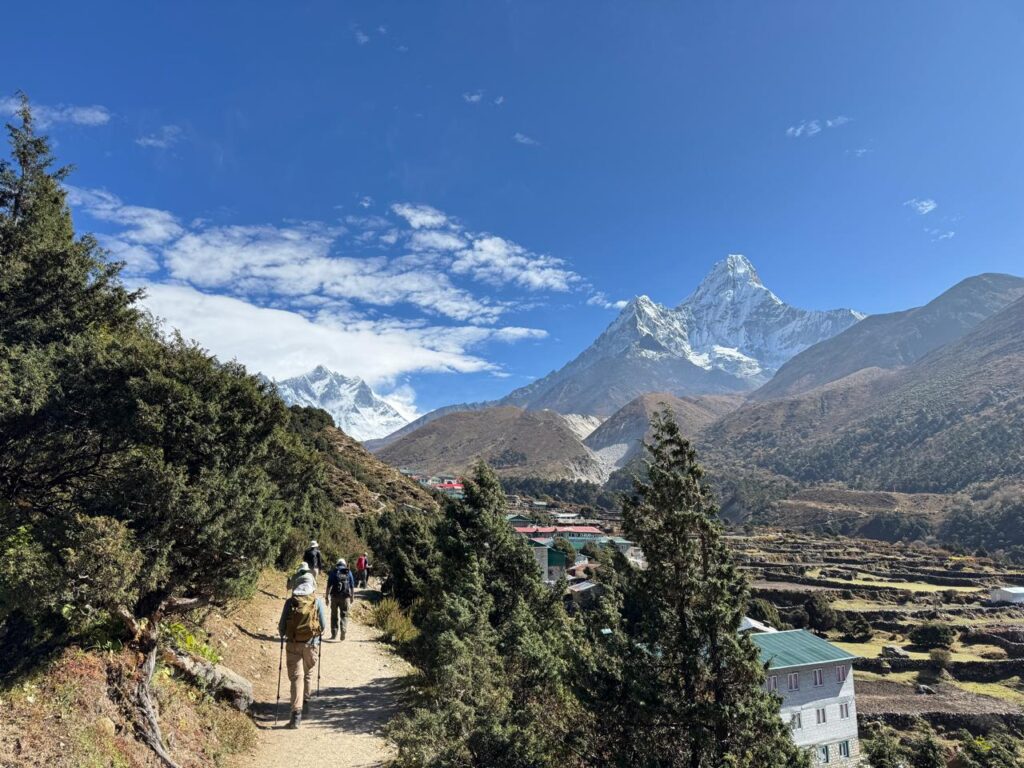
Battery management in cold weather
Battery management is an important determinant to be carried out in the epitome of Everest Base Camp Trek preparation since the cold is very severe, and with a blink of an eye, electronic devices will shut down. Power banks should be brought by trekkers, batteries should remain in bodies, and not unnecessary usage should emphasize. Battery management is also something to plan out before you go trekking to Everest base camp so that your device is able to help you navigate, communicate and take photographs to help remember the experience during your trek. It has to be taken into consideration for Everest Base Camp Trek Preparation.
A successful adventure depends on proper plan and preparation and therefore Everest Base Camp trek preparation is a must. Starting with fitness and acclimatization and going to the equipment choice and, ending with the local culture awareness, safety precautions, and environmental responsibility, every step makes the hiking more enjoyable and safer. If you plan to take an Everest Base Camp trek, keeping these tips in priority will enable you to have the best time in the Himalayas of a lifetime.


